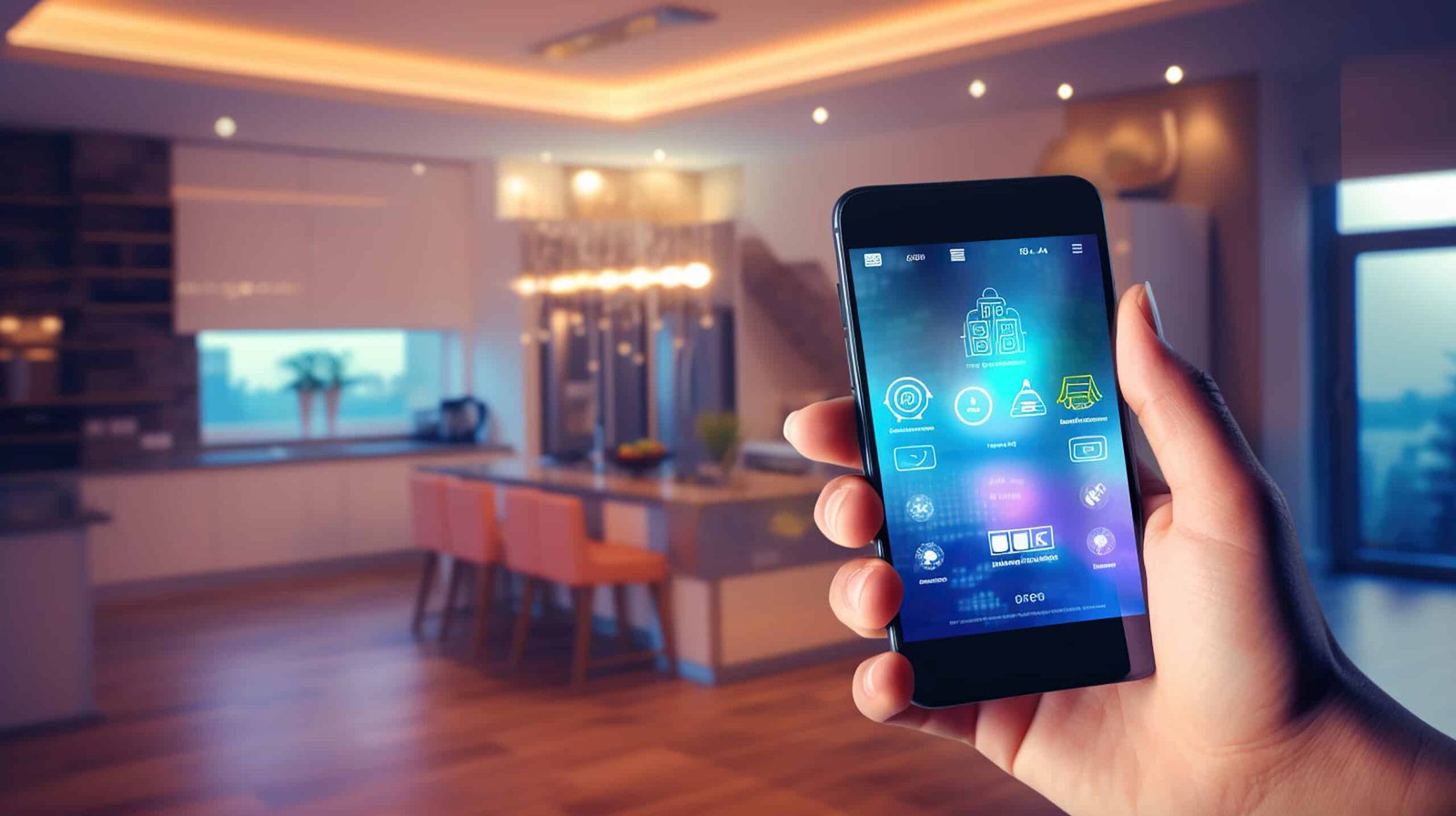Smart home automation and connected devices have come a long way. They now offer ease, security, convenience, and more. They’re no longer just futuristic ideas but are now integral in our day-to-day lives.
These innovations continue to improve the way we interact with our homes. Imagine adjusting everything around your house with just a few phone taps or voice commands. And that’s just one of the many benefits that these things offer!
Enhancing convenience, efficiency, and security
One of the main advantages of smart home automation is having control over various parts of our homes, even when we’re not there. You can adjust temperature settings, turn lights on or off, open and close doors—you name it! You’ll always have control if you have your smartphone handy.
Security is also enhanced with connected devices. Connecting things like cameras, door locks, or motion sensors to your phone will alert homeowners immediately if something fishy happens at their property, even when they’re away. This allows them to take proactive measures early on before anything happens.
Of course, energy efficiency should never be taken for granted. Smart thermostats learn our preferred temperature settings throughout the day and can be adjusted without us having to physically touch them. These adjustments result in less energy being used, which then leads to more savings in the long run.
Smart home automation statistics prove its worth.
It’s safe to say that people know how useful smart home automation can really be, which is why adoption rates continue to skyrocket.
According to recent studies projecting from 2019 to 2025, global market growth rates suggest that by 2025, it will reach $135.3 billion with an annual compound growth rate of about 13.8 per cent!
Another interesting thing about these studies is that they reveal that security and access control systems are actually the most popular smart home devices. Entertainment control systems, lighting control systems, and energy management systems followed closely behind.
The birth of a complex yet user-friendly concept
Smart home devices used to be just too expensive and complex. People had no use for it back then, considering the perks of owning one weren’t as practical as today.
However, rapid developments in technology have paved the way for more affordable and user-friendly solutions. Hence, the public’s interest in these devices grows exponentially over time.
In fact, this growing demand sparked the idea of an Internet of Things ecosystem (IoT). IoTs are interconnected networks that allow different devices to communicate and share data with each other. This network allows seamless integration and control, which enhances the system’s overall functionality.
The components that make up a smart home system
The primary components include intelligent hubs, smart thermostats, lighting systems, security cameras, door locks, and virtual assistants. We are all working together to create an intelligent living space!
- Connection: Connection is a super significant part of any smart home system. Devices must be connected to a reliable network like Wi-Fi or Bluetooth to communicate and work together smoothly.
- Apps on smartphones: Did you know that apps are available for your phone that let you control your home? That’s right, and these apps make it super easy to adjust settings, get notifications, and use every part of your smart home system.
How to choose the right devices for your smart home
There are so many options when it comes to smart home devices. If you feel overwhelmed with all the choices, here are some factors you should consider:
- Compatibility: Your devices will not work together if they aren’t compatible and integrated in one system.
- Specific Needs: Think about the specific things you want to be able to do with your smart home system before purchasing anything.
- Budget: Smart homes can get pretty expensive and while splurging on every device may sound nice, sometimes it’s better to buy what’s necessary at first.
- User Experience: Read reviews from others who’ve already purchased some of the devices you’re thinking about getting yourself. Make sure whatever product you decide has an intuitive interface and regular software updates.
Common Challenges in Smart Homes
While there are plenty of advantages of smart homes, there are also some challenges homeowners have run into with them:
- Interoperability: Different brands tend to come with different communication protocols, which can make it difficult for everything to work together smoothly.
- Privacy & Security: With more technology comes more risk of hacks and breaches in privacy.
- Complexity: Setting up a smart home means entering the world of technology. For those who aren’t familiar with this type of thing, it can be really complex, which is why so many manufacturers now provide customer support during setup.
The Future of Smart Homes
Smart home automation is just getting started. Here’s what it will look like in the future:
- AI: AI-powered virtual assistants, such as Amazon Alexa and Google Assistant, are continuing to get smarter and more capable by the day.
- Integration: It won’t be long before smart homes integrate with augmented reality (AR) and virtual reality (VR). This will provide users with immersive experiences within their own homes.
- Smart Cities & Communities: The idea of a smart home isn’t just going to stay inside the walls of people’s houses. They’re being built to manage resources on a larger scale in places like cities and communities.
Smart homes are all about being green. If you don’t know, smart devices like thermostats and lighting systems can help reduce energy consumption and bring down utility bills. Smart thermostats can monitor your temperature preferences and then adjust as necessary so that no extra energy goes to waste. Lighting systems, on the other hand, will turn themselves off when someone isn’t in the room.
It’s not just about saving money, though. By tracking and analyzing your energy usage patterns, you can make informed decisions about how to best reduce your carbon footprint.
In conclusion
Connected devices and smart home automation are always changing and bringing exciting innovations to our daily lives. In this field alone, we’ve already seen convenience and security improve drastically. Now, with some of these sustainable additions, we’re moving towards a greener future.
With advancements in AI-powered virtual assistants and integration with other technologies, such as smart cities or communities, the possibilities for smart home automation seem endless. It’s all very exciting stuff.
We encourage you to embrace these changes if you haven’t already, whether you’re a tech enthusiast or not. Take some time to explore the trends in smart home automation because they could hold valuable knowledge for everyone.

